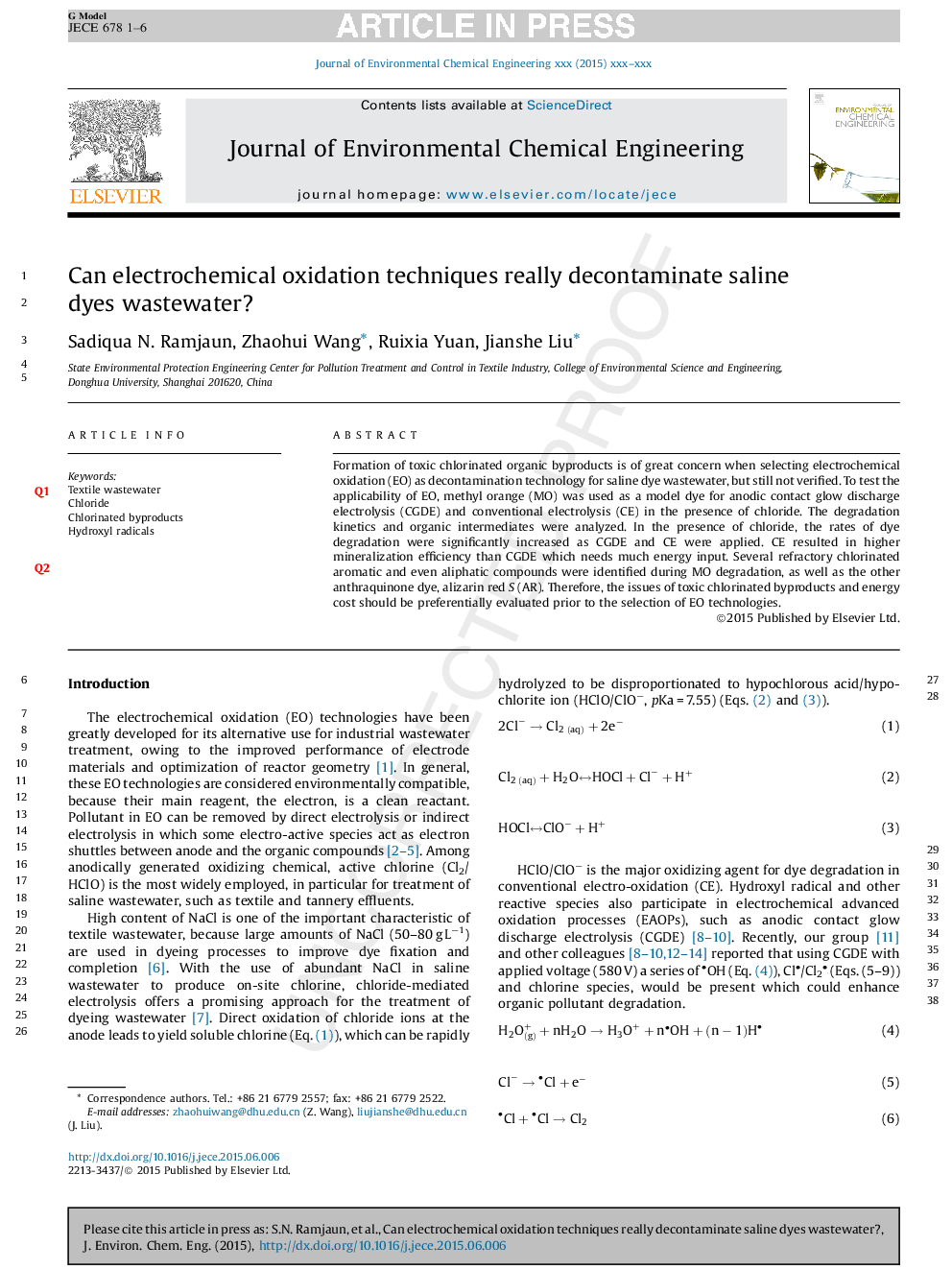| Article ID | Journal | Published Year | Pages | File Type |
|---|---|---|---|---|
| 10277167 | Journal of Environmental Chemical Engineering | 2015 | 6 Pages |
Abstract
Formation of toxic chlorinated organic byproducts is of great concern when selecting electrochemical oxidation (EO) as decontamination technology for saline dye wastewater, but still not verified. To test the applicability of EO, methyl orange (MO) was used as a model dye for anodic contact glow discharge electrolysis (CGDE) and conventional electrolysis (CE) in the presence of chloride. The degradation kinetics and organic intermediates were analyzed. In the presence of chloride, the rates of dye degradation were significantly increased as CGDE and CE were applied. CE resulted in higher mineralization efficiency than CGDE which needs much energy input. Several refractory chlorinated aromatic and even aliphatic compounds were identified during MO degradation, as well as the other anthraquinone dye, alizarin red S (AR). Therefore, the issues of toxic chlorinated byproducts and energy cost should be preferentially evaluated prior to the selection of EO technologies.
Related Topics
Physical Sciences and Engineering
Chemical Engineering
Chemical Engineering (General)
Authors
Sadiqua N. Ramjaun, Zhaohui Wang, Ruixia Yuan, Jianshe Liu,
